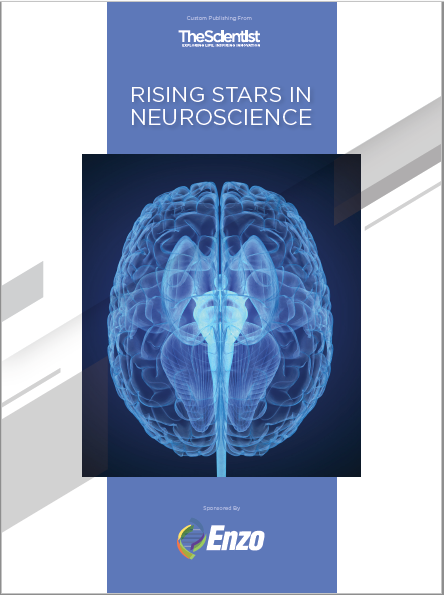CNLM Fellow Katherine Thompson-Peer Featured as a Rising Star in Neuroscience
Excerpt from Rising Stars in Neuroscience from The Scientist.

Katherine L. Thompson-Peer Assistant Professor Department of Developmental and Cell Biology University of California, Irvine
Katherine Thompson-Peer’s curiosity got the best of her when a literature search for neuron regeneration revealed an unappreciated research question: How do dendrites regrow their branches after injury? That curiosity eventually led her to her new lab at the University of California, Irvine, where she uses modern techniques to study this old mystery.
How did you come to study dendrite regeneration?
My graduate work focused on nervous system development, but I wanted to switch it up and study something more clinically relevant. I converted from studying how neurons develop under normal conditions to how they recover after injury. My postdoctoral lab had decades of expertise studying development of dendrite arbors—the highly branched structures that receive information from the environment or neighboring neurons. I was interested in utilizing their experimental tools and insights to study what happens to this arbor after injury.
I started a number of literature searches to learn what was known about neuron recovery. At the time, there were about 1,200 papers on axon regeneration. In contrast, when I searched for dendrite regeneration, there were three hits. I was confused about this disparity because a neuron works as a circuit to process information with both input from dendrites and output from axons.
This seemed to be a blind spot in the field, so I started asking why nobody had studied dendrite regeneration before. My best guess is that it is due to the history of techniques used to study neuroregeneration. Traditionally, this field was built using surgical injury to long bundles of axons. An axon is a bigger target to hit with a scalpel than a dendrite branch.
How do you injure dendrites?
We use an optical injury technique with a two-photon laser microscope to burn the dendrite arbor. We do this in the peripheral nervous system that surrounds the body wall of Drosophila larvae. With the two-photon microscope, we deliver a high-power laser precisely to a small spot. We focus the laser initially at the primary dendrite branch points from the cell body and then repeat this with all of the branches to obtain the strongest effect. Then we follow the same neuron in the larva over many days to see how it recovers.
After injury, the neurons robustly regenerate new dendrites—they grow an arbor with about the same number of branches as uninjured controls1. However, when you take a closer look you see that the regrowth fails to perfectly recreate the uninjured neuron. The arbor is smaller in diameter and how the branches interact with adjacent cells is different. Their touch response is only about 50-60% that of normal neurons. Right now, we’re teasing apart both what allows the dendrites to regenerate as well as they do and what intrinsic cell factors prevent them from fully recreating an uninjured neuron.

